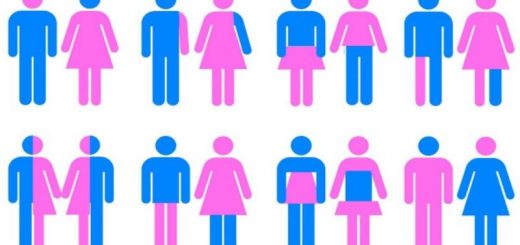NY Times smears Hasidim again… now, in Yiddish

For months now, the New York Times has pursued a campaign to slander and defame Haredi Jews, primarily but not limited to Hasidim and the yeshiva education system. Most recently, the Times demonstrated that it is happy to print blatant pejorative falsehoods about Haredim, especially Hasidim, even when discussing, of all things, Yiddish. That the author of “Yiddish Is Having a Moment” is a professor at Amherst College, Ilan Stavans, only makes the display of ignorance and animus that much more embarrassing.
The untruths begin at the beginning, as he claims that Yiddish, “a language without a physical address,” has “come frighteningly close to extinction.” Stavans ignores the obvious connection between Yiddish and Jews, who for nearly two thousand years had no physical address and were relentlessly persecuted, and were murdered by the millions less than a century ago.
Yiddish was the lingua franca of European Jewry and remains so for Hasidic Jews today. At no time was Yiddish at any unique threat of extinction, at greater danger than Jews themselves.
It is not Yiddish that has survived, rebuilt, and thrived – it is the Orthodox Jewish community. But to point out that the use of Yiddish has consistently tracked the exponential growth of the Hasidic population would contradict the author’s narrative that Yiddish is only now “having a moment.” To Stavans, Yiddish is only relevant if it is being used by non-Hasidim, no matter the burgeoning Hasidic community that speaks Yiddish as their first language.
This is all the more bizarre when one considers that each and every example he touts of Yiddish appearing in modern entertainment concerns a show or film about Hasidim. As the Hasidic community has grown, so has curiosity about its unique lifestyle – and entertainment writers have responded with pieces offering greater and lesser accuracy in their portrayals, as well as lesser and greater bias against the community they claim to depict. (Also notable: at a time of great emphasis on “diversity,” no one has suggested that a Hasidic character ought to be portrayed by an actual Hasid. But I digress.)
Stavans suggests that the use of Yiddish is somehow tied to secular Jews before the Holocaust and that its use primarily by Hasidim today reflects a decline. This is inane: as he himself writes, Yiddish dates back at least to the Twelfth Century of the Common Era, a time when essentially all Jews practiced Judaism. Early secular Jews used Yiddish for no other reason than that they all came from religious homes.
For well over two-thirds of its history, Yiddish was almost exclusively spoken by deeply religious Jews, and that is increasingly true once again now that secular (and even non-Hasidic Orthodox) Jews primarily speak the languages of the countries in which they reside. Identifying Yiddish as a secular Jewish language is no more accurate than claiming that Latin is inherently Catholic.
Of course, Stavans does not refer to Hasidim as Hasidim in this context. Instead, he uses the pejorative term “ultra-Orthodox,” implying extremism. Hasidim are not extremists, they are devout. It is perhaps unsurprising that secular Jews displaying antipathy towards Hasidim, like certain professors at Amherst and editors at the New York Times, might use this term, but it should not pass without comment.
And here we arrive at compelling proof that Stavans has placed his personal bias ahead of basic factual accuracy, as he tells his readers that “They [the aforementioned ‘ultra-Orthodox’] aren’t multilingual, as secular Yiddish speakers always were.” A blithering idiot could do no worse.
The average Hasid has working fluency in at least three languages: Yiddish, Hebrew, and the language of their home countries. Most of the men can also read Aramaic, the language of the Talmud. This is, not coincidentally, at least two more languages than spoken by the average New York Times reader or Amherst student. So his implication that Hasidim, the benighted “ultra-Orthodox,” are somehow uneducated is not merely hypocritical—it inverts reality precisely.
As if Stavans’ own ignorance, arrogance, and hostility required further proof, there is also this gem: “…the rabbinical elite deemed it [Yiddish] unworthy of serious Talmudic discussion.” He obviously does not mean composition of the Talmud, which was concluded hundreds of years before Yiddish existed, but the study of Talmud and its commentaries.
With this statement alone, Stavans demonstrates he pontificates about matters concerning which he has absolutely no knowledge. Anyone familiar with the Hasidic and/or Yeshiva worlds, in which I include children at grade school level, could have set him straight.
That the Hasidim speak Yiddish almost exclusively in their schools and seminaries is almost beside the point. Senior classes in the leading Yeshivos for non-Hasidic, Lithuanian American Jews are at least as likely to be given in Yiddish as in English, both of which are found far more frequently than classes in Hebrew. Stavans perhaps relied upon the fact that written commentaries are most frequently recorded in Rabbinic Hebrew, but Yiddish, or English peppered with Yiddish phrases, are the languages used for oral discussions of the Oral Law.
But don’t think that this means Hebrew escapes Stavans’ derision. To the contrary, he writes that “For some, the language symbolizes far-right Israeli militarism.” He fails to mention that those who would describe the original language of the Bible and Jewish literature in this fashion are quite obviously antisemitic bigots… perhaps because Stavans is not immune to the phenomenon, cited by the late Lord Rabbi Jonathan Sacks, that most antisemites do not perceive their own antisemitism. This is perhaps most true of those antisemites who are themselves Jews.
So why were readers treated to such an embarrassingly ignorant, robustly counter-factual, and even hateful piece? Well, it checked off important boxes for the New York Times: it not only discussed a Jewish practice with nostalgia, but portrayed Orthodox Jews, and especially Hasidim, as backward, ignorant, and extremist. At that point, the antipodal reality was of no consequence – at a time when the Times claims to value “diversity” and antisemitic bigotry and violence are unquestionably on the rise, disdain and derision for Hasidim remain the order of the day.
Originally published in The Times of Israel
Photo Credit: Wikimedia Commons



Let’s be honest, anti-Zionism is a big part of it.
Of course, like a lot of “trends” the Times excitedly informs us of, it’s probably “one or two friends of the writer.”
The NYT has always been hostile to any form of Judaism other than a universalistic RJ and has the sorry historical record of whitewashing Communism, Nazism , ignoring the Holocaust, opposing the creation of a sovereign Jewish state and its right to defend itrself while winning :Pulitzers . The NYT has become a pre Ilan Musk expensive woke Twitter page in its editorial stances, cultural coverage and narratives posing as news coverage. The NYT prints the same level of objective truth as Pravda and Izvestia in their prime